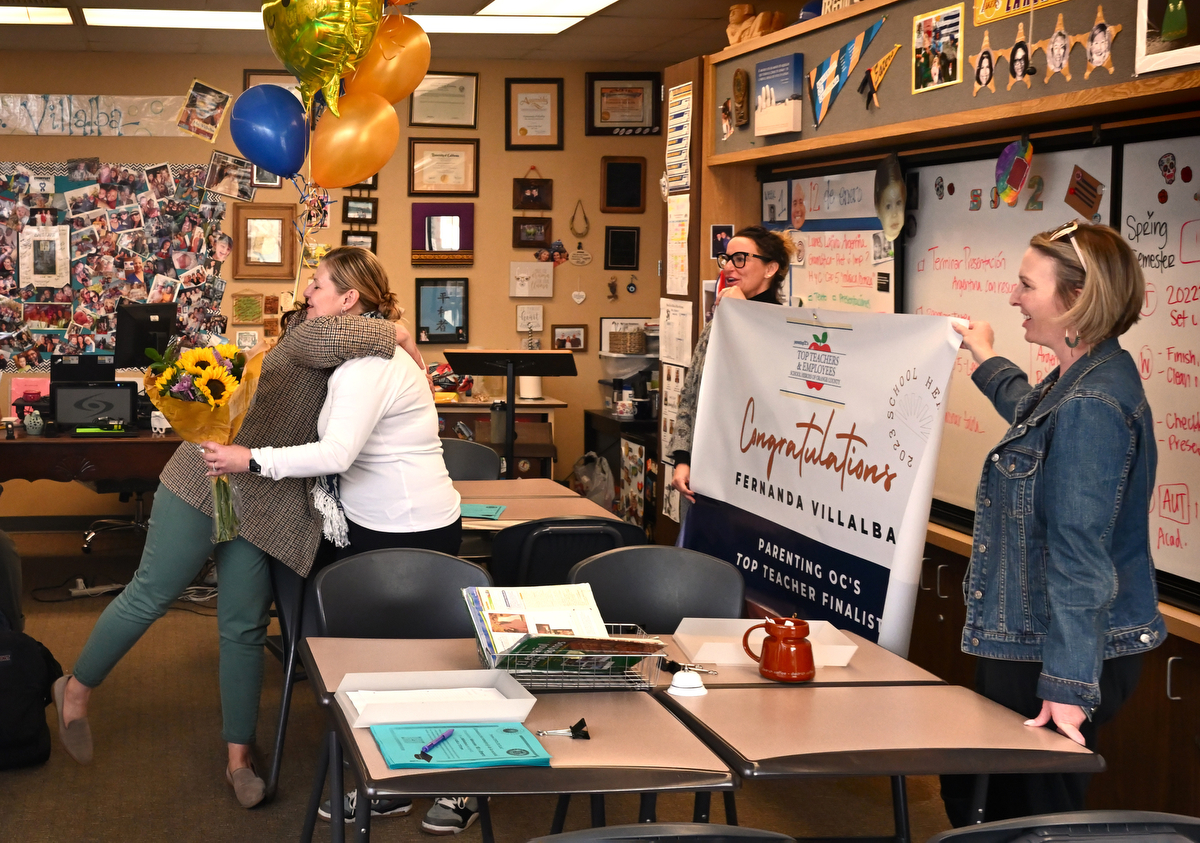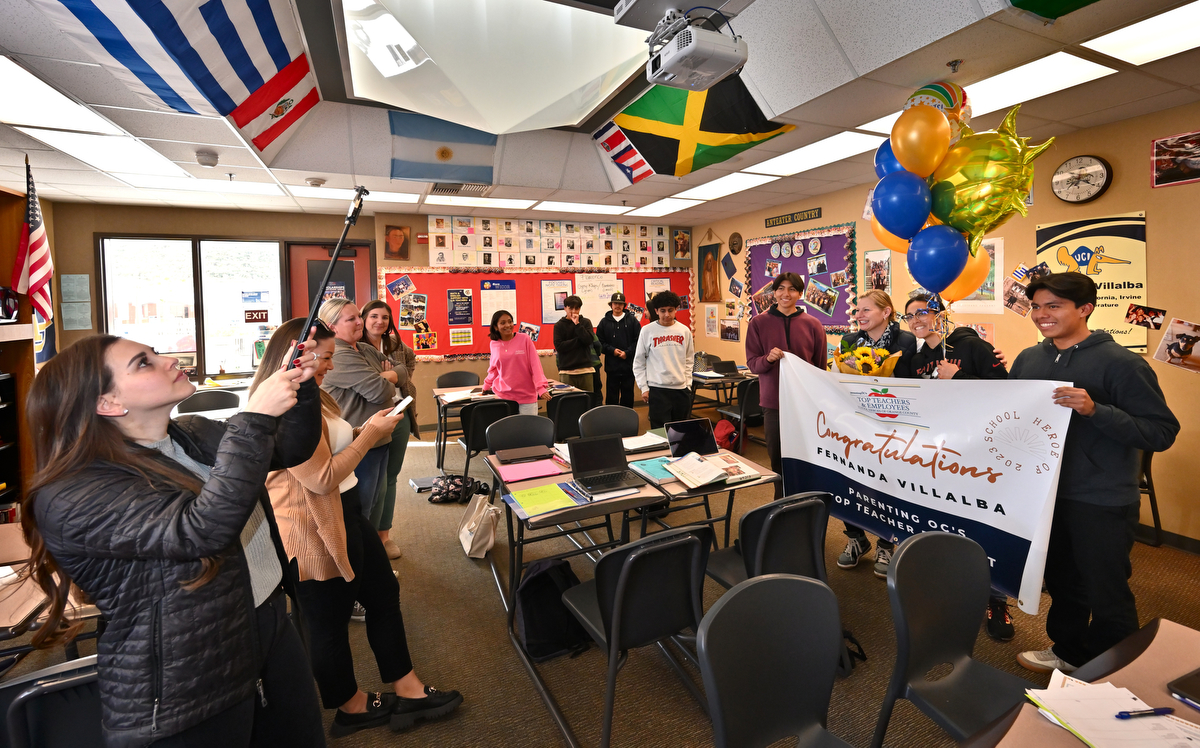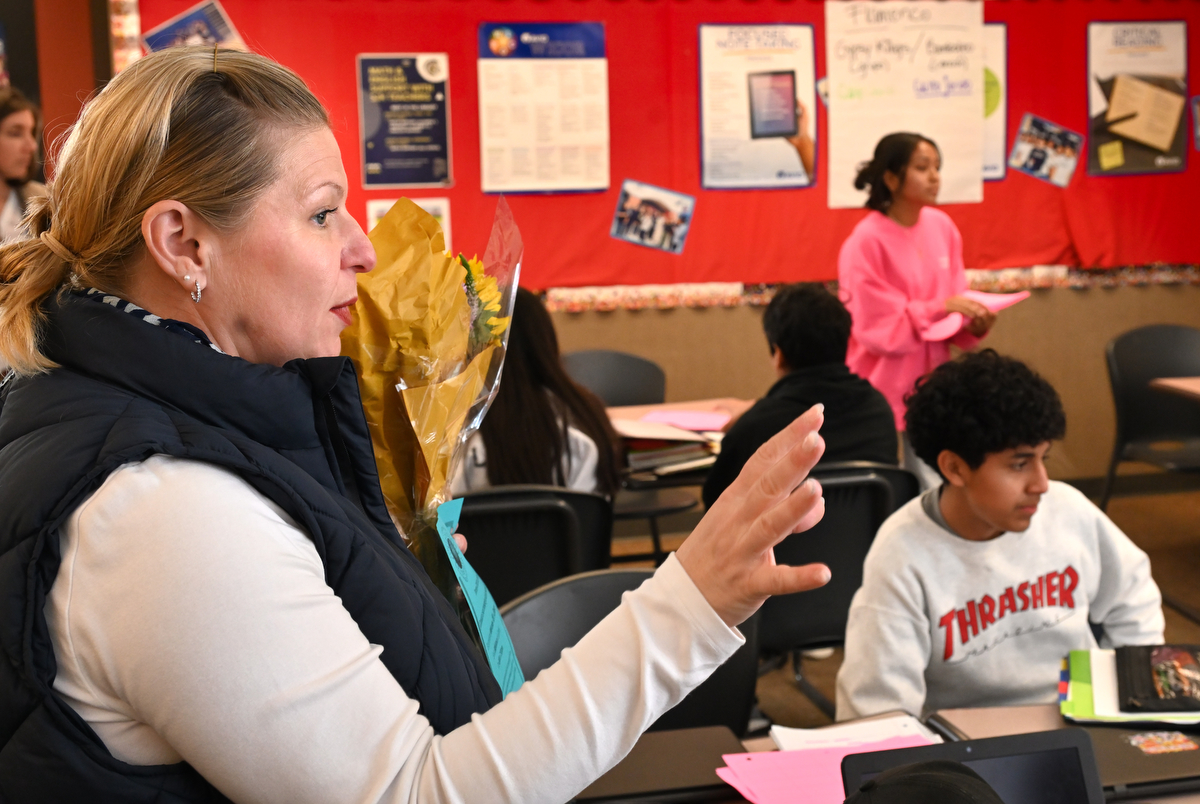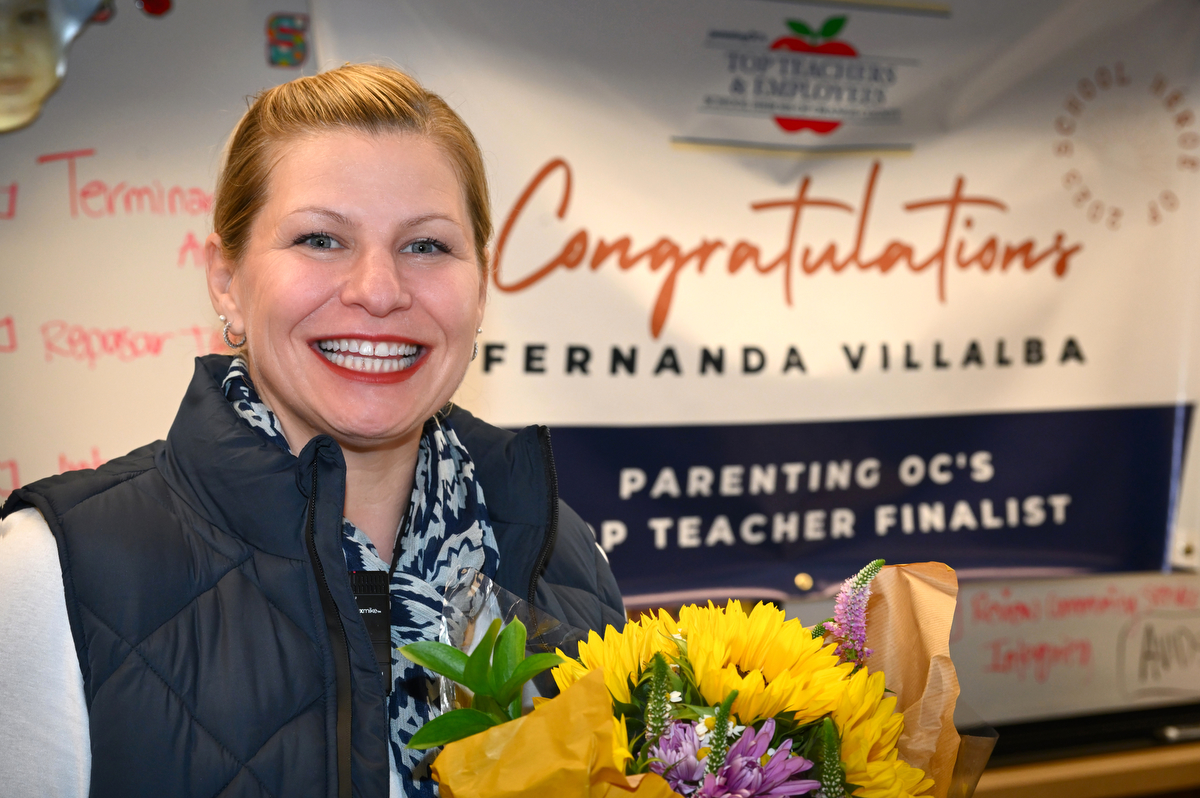By Greg Mellen
It’s been quite a year for Fernanda Villalba, the English Language Development Coordinator and a World Language teacher in Spanish at San Juan Hills High School.
After she learned she had been nominated by the school for Parenting OC Magazine’s 10th annual School Heroes — Top Teacher, Top Employees, and Top Leaders awards, the teacher said “and I’m getting married in April. I’m off to a good start (this year.) I’m going to have to buy a lottery ticket.”
Villalba was also the school’s teacher of the year and, although she didn’t know it at the time, was soon to be named the Capistrano Unified School District’s high school teacher of the year.
Villalba was “surprised” recently when school officials broke into her classroom to make the Parenting OC nomination announcement.
Well, mostly.
Several minutes before the announcement, she was walking across the school’s upper quad and spotted the balloons and organizers preparing. When they told Villalba to go back into her classroom, the jig was up. Still, she played along when the announcement was made.
“You guys are tricksters,” she said as she was presented with the balloons and a banner announcing her nomination was hung on the wall.
Villalba later said that prior to spying the group in the quad she had no idea she had been nominated.
“She’s one of those teachers whose influence goes beyond the four walls,” said Assistant Principal of Guidance Alexandra Easton, who nominated Villalba. “She makes (school) inclusive for everyone.”

Photo by Steven Georges/CUSD Insider
Villalba is one of 51 teacher nominees announced by OC Parenting, and the only one from Capistrano Unified School District’s high schools. More than 200 nominations were submitted for the annual Parenting OC contest. Winners are announced in March.
According to the magazine, they look for “those educators, employees, and administrators that consistently go above and beyond the call of duty.” Villalba was noted by her colleagues for her work with English learners in particular.
“We all know how wonderful she is, this is well deserved,” Easton said.

Photo by Steven Georges/CUSD Insider
The students in her classroom were delighted to see their teacher recognized, giving a standing ovation.
“She’s an amazing teacher,” said sophomore Diego Hernández Torres. “She will work with us on understanding what needs to be done.”
Villalba was also instrumental in planning for the opening of San Juan Hills High in 2007-2008 and was its first Teacher of the Year.
“It’s nice to have colleagues recognize your work,” she said.
Devoted to English learners
Villalba takes to heart the job of working with English learners, not only in helping them become proficient in language, but adapting to the larger challenges of integrating into high school and society.
“It’s very inspirational,” she said of the work. “I’m part of the community and help them see they have a bright future.”

Photo by Steven Georges/CUSD Insider
A native of Uruguay, Villalba has first-hand experience with the challenges immigrant students face.
“Most of my students are Hispanic or Latinx and a lot are first generation,” she said. “Many of their families don’t understand education. It’s great to help them get a feeling of belonging.”
In the Capistrano Unified School District, more than 3,500 (8.1 percent) students among the overall population of about 43,000 require special help with English and are enrolled in the English Language Development (ELD) program. At San Juan Hills High, as of 2021-2022, about 6 percent of the more than 2,900 students were classified as English learners.

Photo by Steven Georges/CUSD Insider
By law they are entitled to receive educational support from the district and remain in ELD until they test out and can be reclassified. Last year, the district’s ELD program was able to help about 25 percent of its ELD students become reclassified and enter the regular curricula.
Many of the students who are reclassified are able to transition into AVID, a nationally recognized program designed to help motivated students complete college-prep coursework and qualify and be accepted to four-year colleges and universities.
As San Juan High’s ELD coordinator, Villalba helps serve as a bridge between home, the school and the larger post-secondary school world.
“I love to see students become biliterate,” she said.

Photo by Steven Georges/CUSD Insider

Photo by Steven Georges/CUSD Insider

Photo by Steven Georges/CUSD Insider

